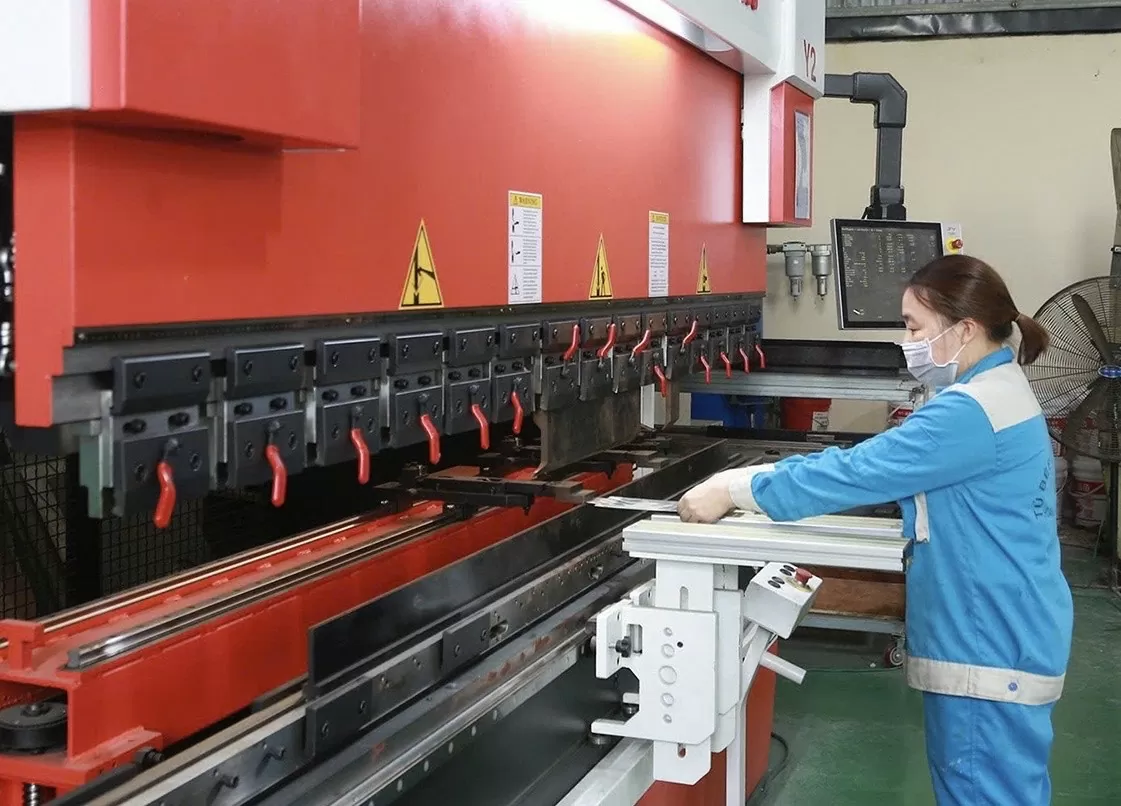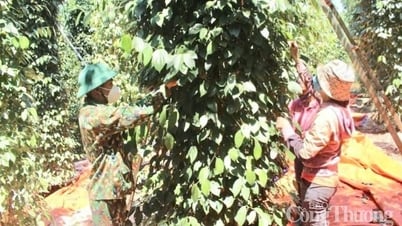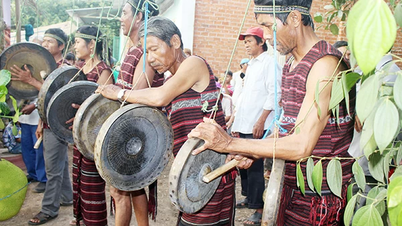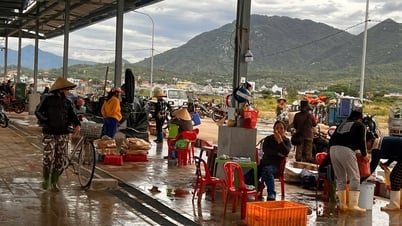In early June, the production atmosphere in traditional craft villages in Vinh Phuc province is more bustling than ever. The crisp sound of machines and the sound of hammers forging from early morning to late afternoon shows a new vitality from talented hands that are innovating every day to adapt to market trends.
From blacksmithing, carpentry to handicrafts, craft villages in Vinh Phuc are not only reviving but are also gradually "transforming" thanks to bold investment in new technology, innovation in designs and expansion of domestic and foreign markets.
 |
Thanks to support from the industrial promotion program, Vtech Co., Ltd. (Tam Duong district, Vinh Phuc province) has more funds to invest in machinery and equipment for production, creating stable jobs for workers. Photo: The Hung |
From talented hands to modern technology
Arriving in An Nhan commune, Vinh Tuong district – famous for the blacksmith villages of Ban Mach, carpentry of Bich Chu, Thu Do, one can clearly feel the vitality of each workshop. The households are racing against time to meet the order progress, serving the market in and outside the province.
Previously, production processes were mainly manual, labor-intensive, time-consuming and dependent on the skills of each worker. Now, households have boldly invested in advanced machinery and equipment such as high-capacity steel cutting machines, branded laser engraving machines, modern furnaces, etc. to increase productivity, improve product designs and quality.
One of the typical examples of innovation is the Ly Nhan Youth Forging Cooperative in Ban Mach village. The knives, axe blades, and hammers forged here are now not only highly durable but also meticulously polished in terms of aesthetics. Not only limited to the domestic market, the cooperative's products have begun to be "exported" to Southeast Asian countries.
Product diversification – market expansion
Not only innovating technology, the households in the craft village also flexibly expand their product portfolio to suit market demand. If previously forged and carpentry products were mainly used for production and construction, now there are lines of high-end gift and decoration products, targeting corporate customers and modern consumers.
Typical examples include Mr. Tran Van Trong and Vu Dang Khoa, new generation blacksmiths who have focused on stainless steel knives for restaurants, hotels, and high-end households. Their products are currently being consumed strongly through e-commerce platforms such as Shopee, Lazada, Facebook, and expanding online sales channels. This is a step in line with digital consumption trends.
In Bich Chu village, artisan Pham Tien Duc has been involved in carpentry for over 20 years. He is a pioneer in shifting from traditional fine art woodwork production to handmade gift baskets for holidays and Tet. With over 30,000 products shipped each month during peak season, his facility not only maintains stable jobs for 10 workers but also creates new product lines that are attractive to the market thanks to their unique designs, reasonable prices and stable quality.
The province currently has 25 traditional craft villages, with thousands of production facilities and about 55,000 direct workers. They are not only the core force preserving traditional crafts, but also “digital citizens” ready to innovate to integrate with the market economy trend.
Many craft villages were once at risk of extinction due to the pressure of urbanization and competition from cheap industrial products, but have now gradually recovered thanks to the flexibility and agility of production households. Many households have used e-commerce, social networks and multi-platform sales channels to reach consumers, reduce intermediary costs and increase competitiveness.
Conservation and development problem
In fact, the strong “return” of Vinh Phuc’s craft villages is not only thanks to the efforts of the people but also the result of the attention from the local government. In recent years, the province has had many policies to promote industry, support preferential loans, design consultancy, brand building and vocational training… to support the craft villages.
However, the problem of sustainable development of craft villages still faces many challenges: from managing environmental pollution, ensuring labor hygiene, building transport and logistics infrastructure, to orienting the planning of craft village space in accordance with urbanization.
In the coming time, in order for craft villages to not only “survive healthily” but also to expand, Vinh Phuc province needs to continue to closely coordinate between the industry and trade, construction, agriculture , environment and culture sectors to both preserve the identity of craft villages and create conditions for rural industry to develop in a modern, green and sustainable direction.
The journey of Vinh Phuc craft villages is opening up a new look: more dynamic, more creative and ready to integrate. From humble blacksmith and carpentry workshops in the countryside, handicraft products have now crossed borders, affirming Vietnamese values in the international market. As long as the craftsmen of the craft village can maintain their “fire of the trade” along with timely support from policies and modern technology, the craft village will survive. Craft villages are places that preserve the soul of national culture and are an important driving force for rural economic development. |
Source: https://congthuong.vn/lang-nghe-vinh-phuc-doi-moi-de-hoi-nhap-vuon-xa-390866.html

































































































Comment (0)